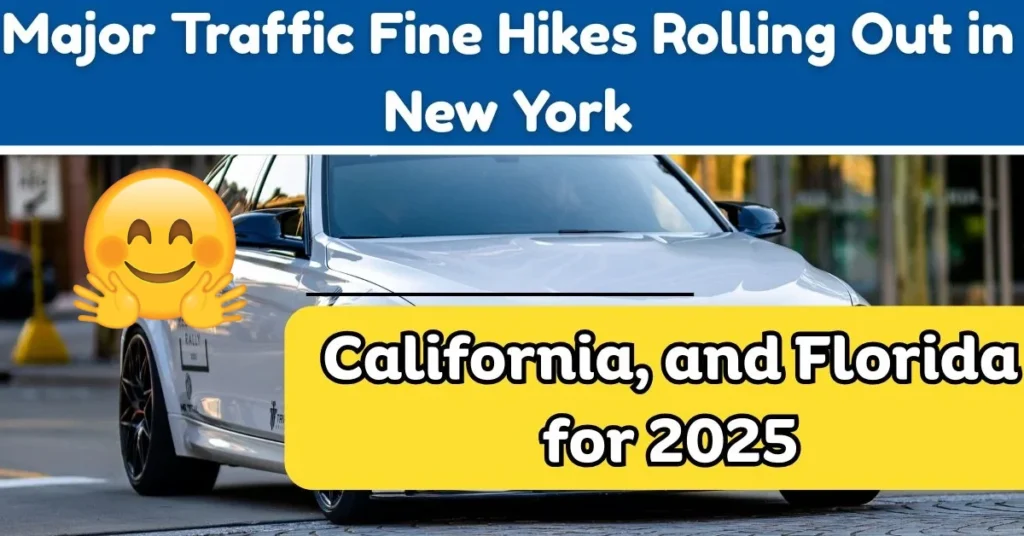Motorists in Texas, Illinois, and Arizona are starting the year with tougher traffic rules and significantly higher fines. The changes, which officially came into effect in January 2025, are part of a broader push to reduce dangerous driving behaviors, improve road safety, and address rising accident rates in busy and high-risk areas.
Authorities in each state have tailored their fine increases to tackle the most pressing safety issues in their regions — from speeding near schools in Arizona to distracted driving in Texas and pedestrian safety in Illinois. For drivers, this means it’s more important than ever to understand the updated penalties and adjust driving habits accordingly.
Texas: Cracking Down on Speeding and Distractions
Texas lawmakers have zeroed in on two major contributors to road accidents — excessive speeding and phone use while driving. Highway patrol officers are now running more speed checks, particularly in accident-prone stretches and school zones.
Key Fine Changes in Texas (2025):
-
Speeding 10–20 mph over the limit: Increased from $175 to $300
-
Texting while driving: Jumped from $200 to $450
-
Failing to stop at a school crossing: Doubled from $150 to $300
Officials have also made it clear that enforcement will be stricter, with additional patrols during peak traffic hours and in areas where pedestrian traffic is high. According to the Texas Department of Public Safety, distracted driving has been a factor in thousands of crashes annually, and these steeper penalties aim to reverse that trend.
Illinois: Protecting Pedestrians and Cyclists
In Illinois, the focus is on urban safety, especially in high-density areas like Chicago, where pedestrian and cyclist traffic has surged. State transportation officials say the fine hikes are intended to make drivers more cautious in congested, shared spaces.
Key Fine Changes in Illinois (2025):
-
Running a red light: Increased from $150 to $300
-
Illegal lane change in construction zones: From $200 to $400
-
Failing to yield to pedestrians in crosswalks: From $120 to $250
Alongside the fine increases, Illinois has launched a public awareness campaign reminding drivers of their legal responsibilities in school zones, crosswalks, and construction areas. Local police departments are also stepping up monitoring in intersections with high accident histories.
Arizona: Stopping Aggressive Driving in Its Tracks
Arizona’s updates target aggressive and impatient driving behaviors that have been linked to severe crashes, particularly on busy freeways and near schools.
Key Fine Changes in Arizona (2025):
-
Speeding near schools: From $200 to $400
-
Unsafe lane changes on highways: From $150 to $300
-
Failure to stop for a school bus: From $250 to $500
Arizona State Troopers have been tasked with heavier patrol schedules and have set up additional checkpoints during school start and dismissal times. The “stop for the bus” law, in particular, is being emphasized, with some school districts even installing cameras on buses to catch violators.
Why These Changes Matter
While the financial sting of these penalties will be felt by many drivers, the goal is prevention, not punishment. Road safety experts argue that higher fines act as a strong deterrent, reducing risky behavior and ultimately saving lives.
Beyond the fines themselves, violations can lead to points on your driving record, increased insurance premiums, and even license suspension for repeat offenders. Commercial drivers may face even stricter repercussions under federal transportation safety rules.
Tips to Avoid Costly Penalties
-
Follow speed limits — especially in school and construction zones where fines are highest.
-
Put your phone away or use hands-free options to comply with distracted driving laws.
-
Respect crosswalks and always yield to pedestrians and cyclists.
-
Avoid aggressive driving such as tailgating, sudden lane changes, or cutting off other vehicles.
Staying Informed
Traffic laws can change from year to year, and ignorance is not an excuse under the law. The safest way to stay up to date is to:
-
Regularly check your state’s Department of Motor Vehicles (DMV) website.
-
Subscribe to traffic safety alerts in your area.
-
Follow official law enforcement social media channels for updates.
Bottom line: These 2025 fine hikes are not just about raising revenue — they are designed to protect lives. Whether you’re in Texas, Illinois, or Arizona, staying informed and cautious behind the wheel could save you far more than just money.
Hi, I’m Siddharth Gokhale – the founder and voice behind Vatadosha.in. I’m a tech enthusiast with a deep passion for smartphones, gadgets, and everything mobile. Over the years, I’ve spent countless hours exploring the mobile industry, testing devices, and keeping up with the latest trends.
I started Vatadosha.in with a simple goal: to help people make smarter choices when it comes to mobile phones. Whether you’re hunting for your next device, comparing features, or just curious about the newest tech – this site is built for you.

